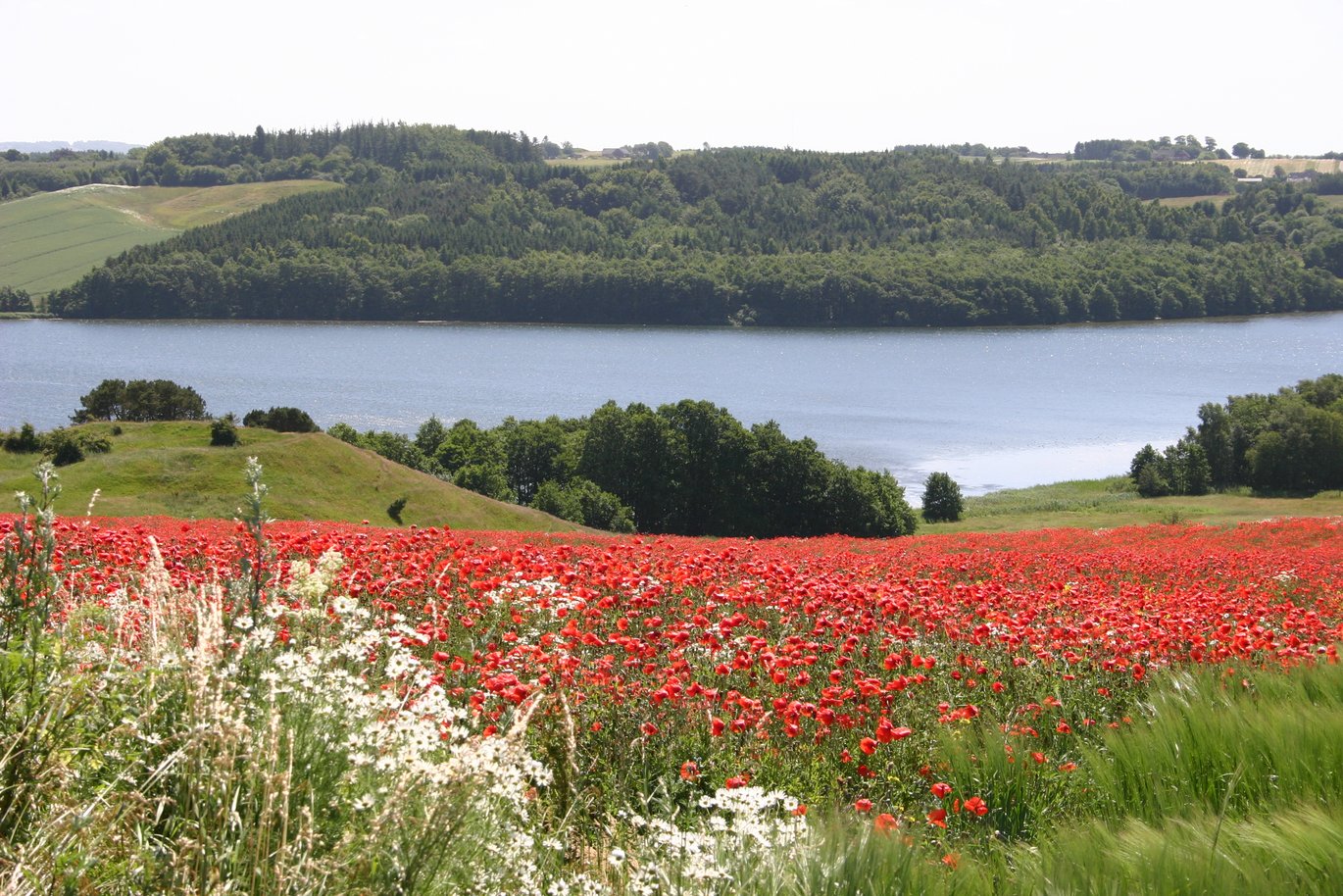Simulation modelling predicts nitrate leaching from artificially drained fields
The DAISY model was successfully tested for simulation of nitrate leaching through agricultural tile drainage system, crop N uptake, and soil water dynamics with a high accuracy.

Waterlogged or flooded fields do not provide the optimum growth conditions for most agricultural crops, which is why many fields are artificially drained. In Denmark more than 50% of the agricultural lands are artificially drained.
“Artificial drainage is an effective water management practice applied in many agricultural fields, not just in Denmark, but all over the world. Specifically in areas where the annual precipitation is high and the soils are fine-textured. Poor drainage conditions result in cause saturation and lack of oxygen in the root-zone of the crops, and one of the most effective ways to control the water table is to install artificial drains,” says PhD-student Saghar K. Motarjemi from the Department of Agroecology at Aarhus University.
However, when a field is artificially drained it also increases the risk for leaching of nutrients such as nitrogen (N) and phosphorous. Leaching of nitrate imposes a great risk for the recipient waterbodies: rivers, lakes, and coastal waters. In one of her studies, Saghar K. Motarjemi and colleagues from Aarhus University and Geological Survey of Denmark and Greenland (GEUS) developed a model to assess how much of the applied N fertiliser is prone to leaching through the drainage systems, as well as what happens to the field N balance.
PLAP – Danish Pesticide Leaching Assessment Programme in Denmark
“In order to improve the risk assessment of this significant transport of N under increased applications of fertilisers in agriculture, we needed high quality data,” Saghar K. Motarjemi explains.
Since 1999 the Danish Pesticide Leaching Assessment Programme (PLAP) has, on behalf of the Danish Government, provided results on risk of leaching. The high-quality data collected by the PLAP provided the basis for this study.
ALSO READ: Twenty years with the unique Danish Alert System for Leaching Pesticides to Groundwater (PLAP)
“We chose a 10-year period from 2000-2009, and used the data to assess the risk associated with the N fertilisers and the effect on crop N uptake and loss pathways,” explains Saghar K, Motarjemi.
The DAISY model
Using the agroecological DAISY model, the researchers were able to assess the risk of N leaching through the drainage system.
“The DAISY model takes into account the atmosphere, plants, soil, and water, which are the fundamental components of an agricultural system incorporated into one model. Using Daisy, we were able to simulate almost all the essential processes for N leaching risk assessment through the soil (such as the N and carbon cycles). Moreover, model enables the user to activate the tile drain system and to simulate groundwater dynamics,” explains Saghar K. Motarjemi.
ALSO READ: Computer model can determine nitrogen mineralization of catch crops
By cross-referencing data from the PLAP with predictions from the model, the researchers found the model to yield good results simulating the N leaching through the drains as well as the crop N uptake.
Frozen soil is difficult to work with
“From the modelling aspect we found for example that the model had difficulty coping with frozen soil conditions. When soil freezes during the winter the hydraulic conductivity decreases and the flow of water is slower. Our model could not cope with that situation, so it predicted N leaching and drainage discharge inaccurately in two different occasions, leading to discrepancies between measurements and simulations. That is one factor, which should be taken into account when modelling N leaching through drains,” says Saghar K. Motarjemi.
But overall, the model simulated nitrate leaching through drainage-systems and the crop N uptake with a high accuracy, which could result in rough approximations on other N balance components that are difficult to measure in reality.
“Based on the simulations by the model, on an annual average over the 10 years, 70% of the N input was utilized by the crops, 11% was leached to the groundwater, 9% was leached through the drainage system, while 7% was lost through e.g. denitrification,” Saghar K. Motarjemi explains.
Need for better management practices
The findings of this study suggest that there is a need for improved management practices to reduce the nitrate levels in the drainage-water in tile drained agricultural fields.
“This study was conducted in Denmark (a temperate region) and under conventional management and tillage practices. Relatively high nitrate concentrations were measured in both groundwater and drainage discharge during the periods when the soil was left bare. This compels us to suggest that the management practices and the crop rotations should be improved to lower that risk. One mitigation-strategy is to make sure the soil is not left uncultivated for long periods, because after harvest there might be crop residues left behind, and as the fresh residues and the soil organic matter mineralize during the decomposition,it could pose a risk of N-leaching, if there are no plants to utilize it,” says Saghar K. Motarjemi.
Additional information | |
| We strive to ensure that all our articles live up to the Danish universities' principles for good research communication(scroll down to find the English version on the web-site). Because of this the article will be supplemented with the following information: | |
| Collaborators | Department of Agroecology at Aarhus University, WATEC - Aarhus University’s Centre for Water Technology, and Geological Survey of Denmark and Greenland (GEUS) |
| Funding | This study was partially funded by WATEC and carried out based on monitoring data provided by the Danish Pesticide Leaching Assessment Programme (PLAP) |
| Conflict of interest | None |
| Read more | The article "Important factors when simulating the water and nitrogen balance in tile-drained agricultural field under long-term monitoring" is published in Science of the Total Environment. It is written by Saghar K. Motarjemi, Annette E. Rosenbom, Bo V. Iversen, adn Finn Plauborg. |
| Contact | PhD Saghar K. Motarjemi, Department of Agroecology, Aarhus University. Mail: sa.m@agro.au.dk |
